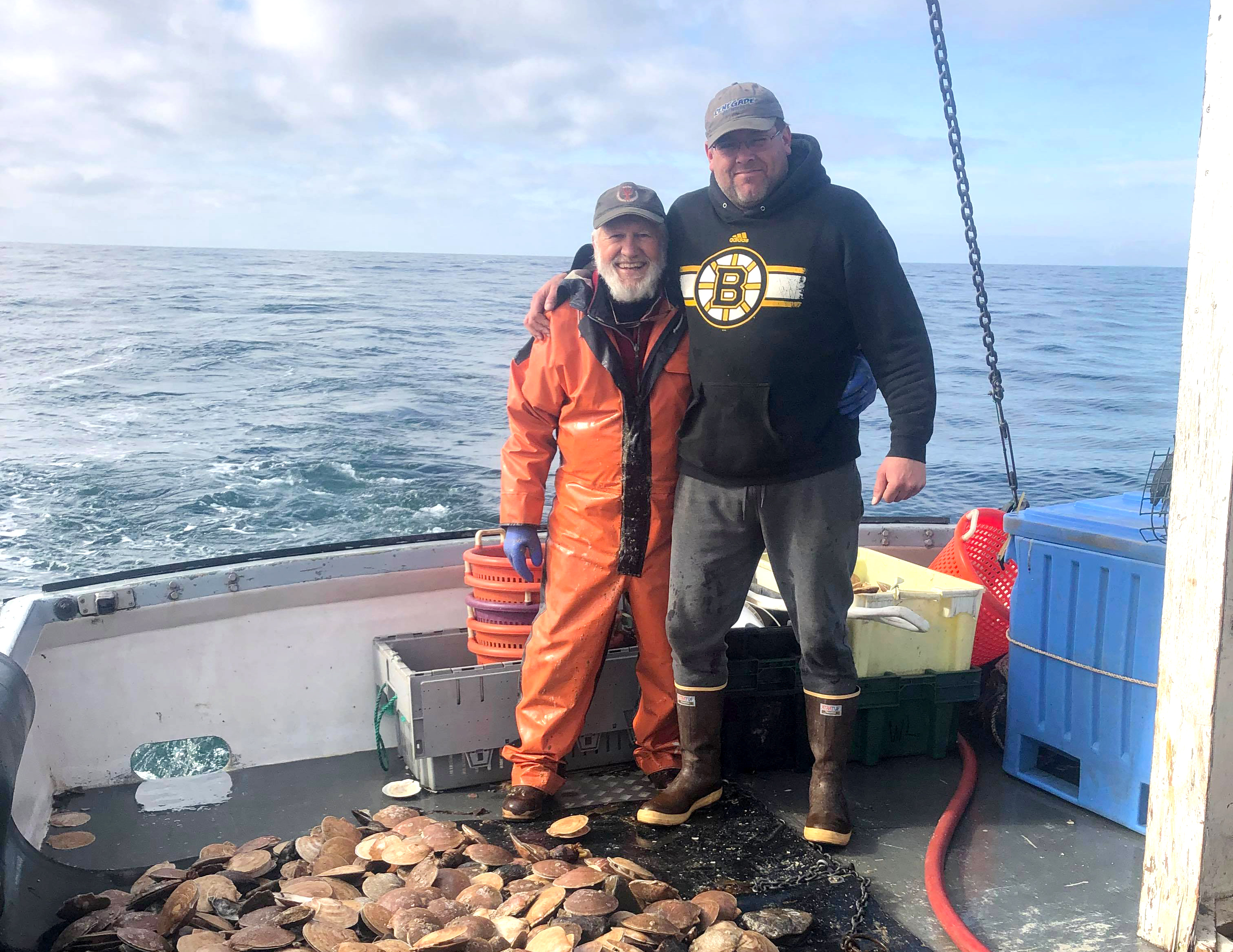In June 2019, Maine’s Gov. Janet Mills signed a bill requiring the state Public Utilities Commission to approve the contract for an offshore wind pilot project in Maine. This project will operate an 11-MW turbine off of Monhegan Island.
Though touted as research to explore clean energy alternatives, this project is an experiment. And during this experiment, power generated will be sold for profit, likely to out of state consumers. Information from this research will not just benefit scientists, but also big-money energy investors who want to develop wind farms throughout the Gulf of Maine.
“When you a look at a chart of where all the preferred wind farm leases are on the East Coast and compare that to the chart NMFS has made showing the most heavily fished areas, almost every lease is based directly on or adjacent to the best grounds,” said fisherman Glen Libby.
There is a lot more at stake here than may meet the eye. Drilling the ocean meters down, placing cables and topping with an artificial cover for miles will at the very least disrupt and at the very worst destroy countless marine life habitats, ecosystems and breeding grounds, which will influence the food chain from there on up, not to mention the unknown long-term effects chemicals coating the underground cables may have on the environment and consumers.
Electromagnetic fields and noise from offshore wind turbines can interrupt the natural cycles of robust native species as well as endangered and protected marine species — including right whales, for which lobstermen have changed fishing practices and gear to avoid doing any potential harm.
“If this goes through, it’ll forever change fishing families’ lives in a negative way,” said Eben Nieuwkerk, a fisherman who has started an online petition to stop the wind array, which be found at tinyurl.com/gulfofmaine.
European wind arrays have resulted in some surrounding areas deemed no-fishing areas because of the proximity to the turbines, resulting in fishermen losing access to fish and areas they have depended on for generations to harvest fish. This is a risk many Maine fishermen do not want to gamble on.
“Every bit of where they have marked (for potential offshore wind farms) is prime tuna and lobster bottom,” said fisherman Michael Myers.
Then there is the financial concern. Rhode Island’s Block Island wind array energy started at 24.4 cents per kwh, more than double the price paid for power from conventional sources. Add to this annual increases of 3.5 percent for life of the contract. Energy consumers have taken the wind power company to court about this.
With right whale regulation struggles, seafood trade tariffs, a global pandemic, and government and state restrictions and regulations prohibiting the numbers of days fishermen can fish and limiting what they can catch, now is not the time to experiment with a wind array. The Gulf of Maine should not be used as a guinea pig.
“My biggest concern is that fisherman from all types of fisheries will lose bottom and never get it back,” said fisherman Erik Waterman. “This is our livelihood; our pie keeps getting sliced. I’m afraid that if we allow one wind turbine power cable ashore it is going to snowball up and down the coast.”
Shelley Fleming Wigglesworth is a freelance journalist based in Kennebunkport, Maine.
[This op-ed has been edited to correct the size, scale and location of the wind pilot project, which is a single 11-MW turbine off Maine's Monehgan Island.
In 2019, the governor signed a bill for the PUC contract for the one-turbine project near Monhegan, which had been permitted by the state in prior years. While there is a proposed offshore research array, no federal application has been made for it, no PUC process has yet occurred, and no legislation has been signed regarding it.]







